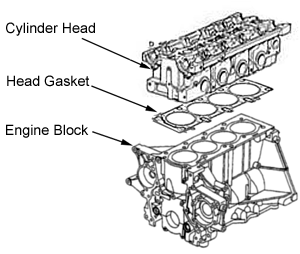Perhaps. An overheated engine can blow a head gasket. Water pump failure can cause the engine to overheat. A lot depends on the nature of the waterpump and head gasket failures.
One would not expect the water pump to fail after 40,000 miles, but water pump failure after 11 years is not surprising. Water pumps do not typically fail without warning, though. They can, but the typical mode of failure is leaking. Slowly at first, so slow the only evidence is low coolant levels. As the leak gets worse, the vehicle may start to leave puddles.
In the US, if I had such a service performed on my vehicle, and the mechanic discovered a low coolant level, I would expect the mechanic to notify me about the situation. While there are reasons for low coolant level that does not imply a critical situation that needs immediate repair, unless the cause is known, the operator needs to be notified to check the coolant frequently so that a problem does not develop.
It is possible that the mechanic opened the cooling system while it was hot and did attributed the low coolant level to his own mistake, so he did not feel the need to inform the owner.
It is possible that the waterpump is fine, but a radiator hose developed a leak. 11 year old hoses have a habit of doing this. Since they will rot from the inside, a mechanic may not be able to tell if the hose is about to fail.
Since there the following was included in the service
there is evidence that the mechanic did, in fact, check these out. In the absence of any evidence the mechanic did not do these things, one has to believe they were done. As I stated above, just because the hoses look to be in good condition on the outside does not mean they aren’t about to start leaking. Same thing for the water pump. As the operator of a motor vehicle, one is supposed to monitor the engine temperature (if a temperature gauge is available and in good working order) and be aware of any unusual odors (a small leak can be smelled as the antifreeze has a distinct odor; a large leak will produce copious amounts of steam).
Of course, it is also possible that there was no warning signs at all and both the mechanic and the operator could not have anticipated the failure. Without knowing more details, it would be hard to tell.
In the US, a car with only 40,000 miles on it in 11 years would be considered a very low mileage vehicle. One of the problems of very low mileage vehicles is rubber and plastic parts are prone to failure. These parts would probably be replaced once or even twice in 11 years under normal driving conditions, but because the mileage was so low, they often can fail without notice.
